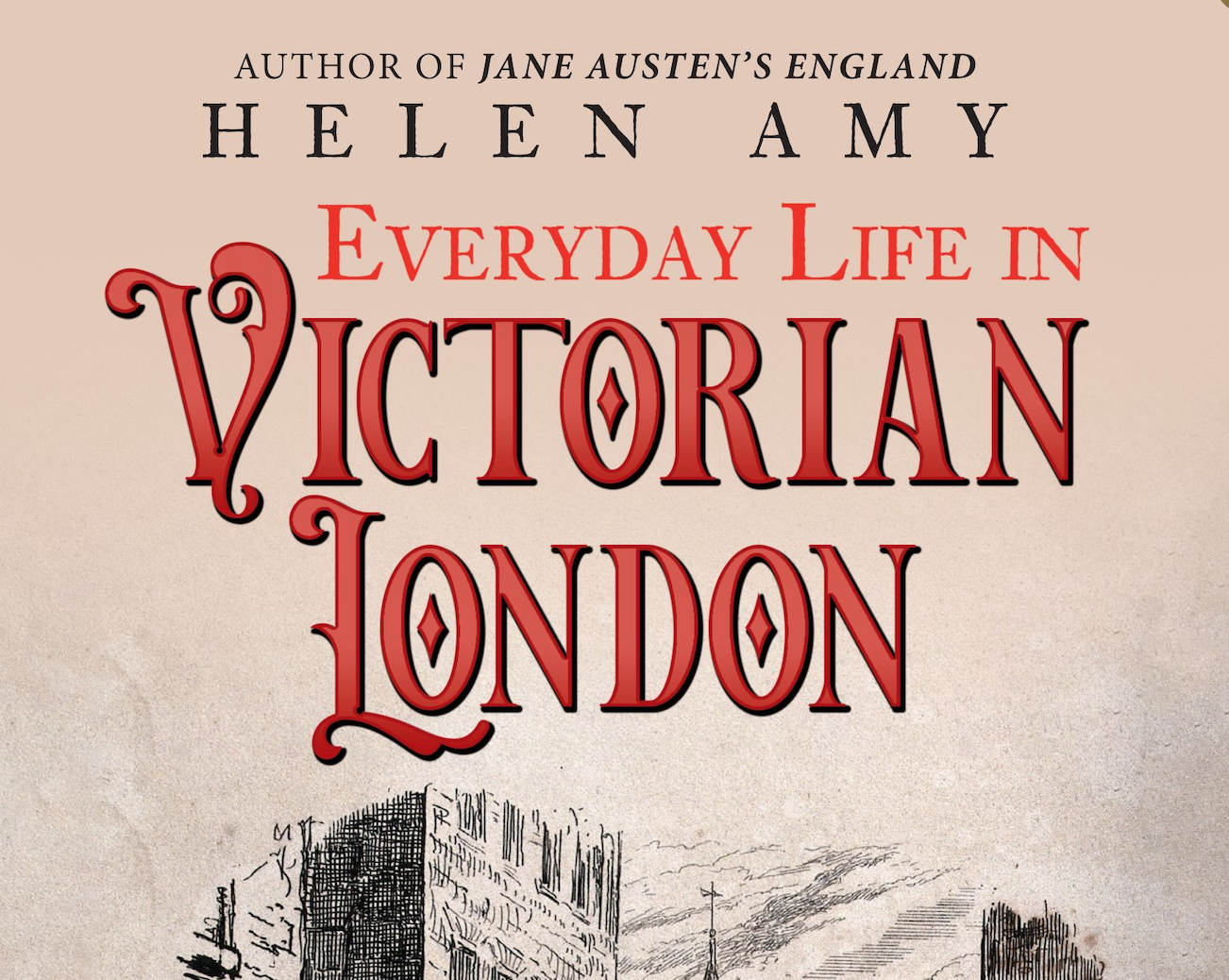Post
BOOK REVIEW | Everyday Life in Victorian London
7 Sep 2023
By Helen Amy
Reviewed by Liz Gwinnell
London, it could be argued, changed more during the reign of Queen Victoria than at any other time in British history, creating the structure and foundations of the capital city that exists today.
Everyday Life in Victorian London is a wonderful journey through the best of times and the worst of times (to quote the Victorian author, Charles Dickens) and not only is that journey a joy to take, but this book is written in such a way as to make Victorian London rise from the pages in clouds of colour, smell, sound and noise. Helen Amy’s words and the middle section of photographs have the power to conjure up powerful visual and audio scenes.
Subscribe to The London Society newsletter
History books can be difficult to read, let alone write, but Helen Amy’s clear and engaging prose makes this excursion into Victorian London an absolute delight. Here the stories of everyday people are set against the background of a city dominated by the River Thames: from the street children living under the arches of railway bridges to the great benefactors of the age who contributed so much to social change.
Quoting from first-hand accounts from commentators, observers, reformers and writers of the time, Everyday Life in Victorian London brings the voices of young flower sellers, sewage flushers and dockers to life. First hand accounts from the workers of the day are vividly reproduced; from the maid of all work’s painful knees to a rubbish shifter and his wife sifting through the dust yards hoping to find something of value. Costermongers sell strawberries in “pottles” from barrows and “pure finders” collect faeces and sell them to the tanneries of Bermondsey to use in the leather-making process. Chair menders sit on doorsteps with bundles of rushes and canes. An organ grinder’s monkey escapes and runs up a laburnum tree.
As the title promises, the book follows the lives of those who inhabited London between 1837 and 1901. It takes us down narrow streets and pushes us into crowds celebrating Queen Victoria’s Golden Jubilee. It shows us London street children seeking to earn a living by stealing handkerchiefs and wearing rags; it takes us down dark and stinking alleyways and into the slum areas of the East End to see those living in the shadows of the city whilst all around them the roads were improved, hospitals and cemeteries built, sewers dug deep underground and fresh drinking water provided to Londoners for the first time. It leads the reader to the glittering spectacle of the Crystal Palace designed by Joseph Paxton for the Great Exhibition of 1851 with its glass walls and 21-foot-high crystal fountain and takes us into the dark and dangerous depths of the thieves’ kitchens, febrile alleyways and potent, seething dens of the criminal underworld.
Whilst the subject matter is wide and varied, the writing is light and easy to read giving rich, evocative detail. Helen Amy has the gift to bring the city alive with her words and paints a portrait of activities that were once part of London life but which have now disappeared: the hustle and bustle in Printing House Square, for example, which greeted the publication of the daily editions of The Times newspaper; the velvet and silk weavers who lived and worked in Bethnal Green and Spitalfields; the clockmakers who inhabited Clerkenwell.
Reading this book makes you realise the incredible contribution, foresight and ingenuity of the men and women of the Victorian era and how they improved and changed all aspects of life from health and public services to living conditions and education: They even changed the River Thames to make it a faster flowing, cleaner river. The Victorians were masters at identifying and solving everyday problems faced by those who lived in London and during their time, there were major developments in medicine, education engineering and public services with embankments, concert halls, hospitals, bridges and railways being built. It is perhaps ironic that as progress swept into town and reformed many aspects of London life, those living in the poorest areas often found themselves squeezed onto the fringes of Society, living in crowded slums often just a stone’s throw away from the more affluent areas.
Check out our rundown of upcoming events
The success of this book lies in the way Helen Amy is faithful to both, producing a vast and wonderful kaleidoscope of the ordinary, extraordinary and everyday lives lived in the great capital city of Victorian London.
